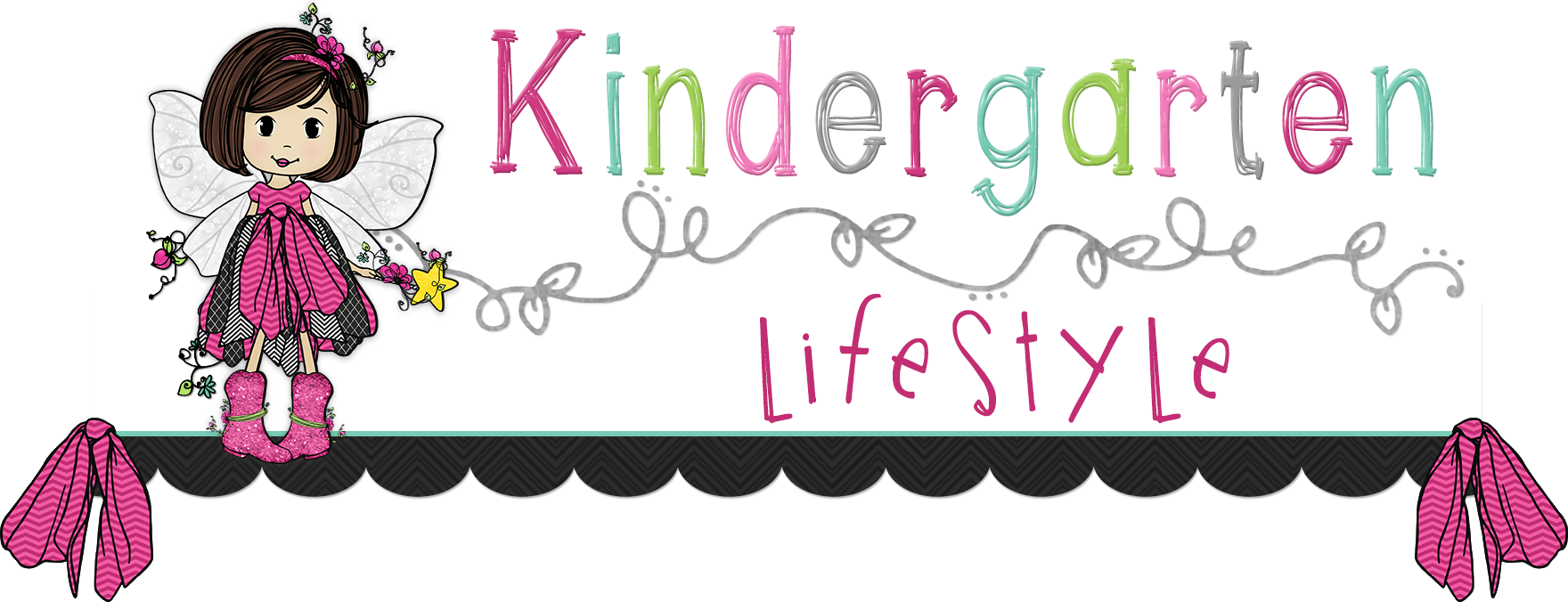Welcome back for my reflections on Chapter 3....Yes I am a bit late getting this post together. I am so sorry. My dad went into the hospital last Tuesday with pneumonia - his O2 saturation is still not good....and well I just had to deal with life :0) Anyways, I'm back and ready to jot down some ideas for implementing D5 in my kinder classroom.
I will use the guiding questions/thoughts that Tammy from Live, Love, Laugh Everyday in Kindergarten set out.. She is so good at that!
Now, I've told you before that I've done D5 in 1st and 2nd grade so although I didn't do it in kinder, I did naturally learn alot from using D5 for years - and that naturally bled over to my teaching in kinder.
1. Establish a gathering place for brain and body breaks.
Check! Our whole group learning area is a big circle rug that looks like the ocean. It's beautiful and makes me smile :0) I call in the circle since it's ....a circle. (creative I know)
(hahaha - ignore the Easter eggs laying around the circle carpet)
I also believe in the importance of getting kids up and moving to re-engage their minds. It's about movement. I know when I sit too long in one place my mind starts drifting and it's so easy to become zombiefied. Simply getting up and moving causes your brain to wake up. I play lots of transition songs - just 2-3 minute songs that the kids can dance to, wake up their mind, and they feel ready to go back to learning.
2. Develop the concept of "good fit" books.
I definitely use the shoe lesson the Sisters offer in their book. The kids so enjoy seeing me flop around like a loon in my husband's work boots and they love trying on their classmates' shoes. It really gets the message across that we are all different and what fits me may not fit you.....and that's OK. Here are some books I use when teaching about "good-fit" books along with the Sisters' shoe lesson:
"Those Shoes" is a story about a boy who wants a pair of shoes so bad he tries to wear a pair that doesn't fit him at all. This is a wonderful story to use to demonstrate to kids that we need to choose books that "fit" us. Kids often want to read books that their friends read - even if they are way too hard....this is a perfect book to calm that and help us focus on what WE as individuals need.
"Pete the Cat: Rocking in My School Shoes" is just a super fun story that is perfect to read the first week of school. It will allow you to make lots of connections for when you begin teaching the shoe lesson. Kids love shoes - so it's a great way to engage them quickly!
"Pete the Cat: I Love My White Shoes" another fun "shoe" book with Pete the Cat.... again a perfect book to read during the first week of school.
"Dog in Boots" is a story about a dog who wants shoes like those from "Puss in Boots". He finds some great shoes, but they don't let him do what dogs do. They don't fit his purpose. This book is a must have when teaching about choosing books based on your purpose for reading.
3. Create anchor charts with students How will these be visual in the room? Where will you store them? What about small spaces?
I am so lucky that I have a nice size room to teach in. Believe me, I used to teach in a broom closet...and with no windows! So, I really love the bigger room with lovely windows! When my kids enter my kinder room the walls are bare because our learning needs to be created as we go. This also means I do not store anchor charts. I give them to the students at the end of the year. Just like we build our room together, we take it apart as well.
Now, there are times when I get a chart started before they enter the room for time's sake. But, the kids watch/interact as we "build" each anchor chart because there's a lot of learning and muscle memory that goes into seeing the chart made, hung up, and referenced to time and time again. Usually our anchor charts stay up all year long. Sometimes, I've noticed that some charts become obsolete and take up valuable room when we need it for other charts. So, I love the idea that Marsha at A Differentiated Kindergarten suggested - when they have hung for so long - take a photo and create a reference book. Then you can re-use that space (especially important in tiny rooms) and yet kids can still access those anchor charts. Thanks Marsha - great idea!
4. Short, repeated intervals of independent practice and setting up book boxes (How are you going to keep track of stamina? What will you use for book boxes? What are you going to put in those book boxes on the 1st day of school?)
Their book boxes contain guided reading books they've read as well as other books they choose. It also holds their writer's workshop folder, crayons and pen. It basically is a store-house for all their personal learning materials they need throughout the day.
5. Calm Signals and check in procedures (Do you already
have a signal? How will you handle check ins?)
I use music for all my transitions. In fact, more times than not there is some form on music going in my class. The only time I don't have music playing is during our whole group lessons (and even then I have music incorporated throughout the lesson). What can I say? I'm a music lover!
I do have a set of bells just like the Sisters use (I bought them years ago when I first started Daily 5 in second grade.) I do use them, but I have found that using the music on my computer (itunes) works better....and is just "me". I'm not a super quiet person so me using quiet bells seems a little out of place. :0)
6. Using the correct model/incorrect model approach for demonstrating appropriate behaviors.
My plan for addressing incorrect behavior is first to have a preventative outlook.....lots and lots of repetitive practice for all. I love how the Sisters talked about modeling, then have kids show correct behavior. But they don't stop there. They then allow a child who likes to act out - act out!!! Show that incorrect behavior! Next comes the beauty - have that same student show correct behavior. This is so important for a number of reasons. First, it helps you know whether that student truly can demonstrate correct behavior. It also shows others he can do it. It shows that student, he can do it and the good feelings that brings. It also provides muscle memory for when you correct him.
If I have one that simply struggles even with continued practice, I work one-on-one with that student to learn the needed behaviors. It may seem like I'm neglecting other kids, but trust me you will waste alot more time and learning if you don't address that child's needs. I have set up individual behavior plans for children that need extra, extrinsic motivation. This is also where relationship becomes ultra important. Most kids will do what you want IF they know you love them (and they are capable). I also work on motivating all my students. I want everything we do to be SO fun, they can't wait to join in. No plan works 100% of the time. You go with the flow, you take into account the particular child, and the particular group of kids - and you go from there. This is one thing that makes teaching such a difficult job! :0)
I am LOVING this book study. I'll be honest. I am not 100% sold on doing D5 in kinder. I believe what I will do will be a combination between literacy workstations and D5. There are things that still concern me about doing strict D5 in kinder - interaction and developmental activities being part of my concern and not having enough time for a true Writer's Workshop. Currently, my centers (which are really Debbie Diller-style workstations) work really well. I see amazing things from my students and I kind of feel.....why mess with something that works. And this is why we study things, right?.....to determine if something is right for us....:0)
That being said.....I adore this book study and anyone can benefit from the discussions that have spawned from it.
5. Calm Signals and check in procedures (Do you already
have a signal? How will you handle check ins?)
I use music for all my transitions. In fact, more times than not there is some form on music going in my class. The only time I don't have music playing is during our whole group lessons (and even then I have music incorporated throughout the lesson). What can I say? I'm a music lover!
I do have a set of bells just like the Sisters use (I bought them years ago when I first started Daily 5 in second grade.) I do use them, but I have found that using the music on my computer (itunes) works better....and is just "me". I'm not a super quiet person so me using quiet bells seems a little out of place. :0)
6. Using the correct model/incorrect model approach for demonstrating appropriate behaviors.
My plan for addressing incorrect behavior is first to have a preventative outlook.....lots and lots of repetitive practice for all. I love how the Sisters talked about modeling, then have kids show correct behavior. But they don't stop there. They then allow a child who likes to act out - act out!!! Show that incorrect behavior! Next comes the beauty - have that same student show correct behavior. This is so important for a number of reasons. First, it helps you know whether that student truly can demonstrate correct behavior. It also shows others he can do it. It shows that student, he can do it and the good feelings that brings. It also provides muscle memory for when you correct him.
If I have one that simply struggles even with continued practice, I work one-on-one with that student to learn the needed behaviors. It may seem like I'm neglecting other kids, but trust me you will waste alot more time and learning if you don't address that child's needs. I have set up individual behavior plans for children that need extra, extrinsic motivation. This is also where relationship becomes ultra important. Most kids will do what you want IF they know you love them (and they are capable). I also work on motivating all my students. I want everything we do to be SO fun, they can't wait to join in. No plan works 100% of the time. You go with the flow, you take into account the particular child, and the particular group of kids - and you go from there. This is one thing that makes teaching such a difficult job! :0)
I am LOVING this book study. I'll be honest. I am not 100% sold on doing D5 in kinder. I believe what I will do will be a combination between literacy workstations and D5. There are things that still concern me about doing strict D5 in kinder - interaction and developmental activities being part of my concern and not having enough time for a true Writer's Workshop. Currently, my centers (which are really Debbie Diller-style workstations) work really well. I see amazing things from my students and I kind of feel.....why mess with something that works. And this is why we study things, right?.....to determine if something is right for us....:0)
That being said.....I adore this book study and anyone can benefit from the discussions that have spawned from it.









Oh, I never even THOUGHT to use the Pete books to talk about 'Good Fit' books...what a great suggestion!
ReplyDeleteThank you :)
Sorry to hear about your dad. I hope he'll be okay.
ReplyDelete_Chrissy
First Grade Found Me
I'm really appreciating this book study! I do Debbie Diller{ish} style stations in my 1st grade classroom as well. It works wonderfully...but I was so intrigued by all that I've seen/heard about D5 this summer that I bought the book! I just finished Chapter 4 (highlighter and pen in hand)...
ReplyDeleteThanks for sharing!
~Tanya
Mrs. Dwyer’s A+ Firsties
The primary teachers at my school are doing a D5 book study this year. Through a plea for help & ideas on. Y blog, I found this book study. Thank you for your thoughts - particularly about not doing a strict D5 program. I'm curious to learn how you have incorporated the components into your classroom.
ReplyDeleteThanks!
Linda
Kindergartendoodles.blogspot.com